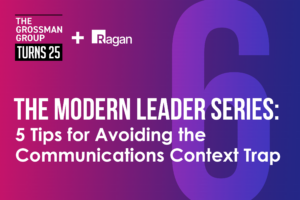Takeaways from Marriott’s emotional CEO video
The hotel chain’s chief Arne Sorenson looked right into the camera to deliver his regrets and sympathy for team members affected by the COVID-19 crisis.
Editor’s note: We are re-running the top stories of 2020 as part of our year-end countdown.
When delivering bad news, it’s essential to tell it straight.
That’s the big takeaway from the video from Marriott’s CEO Arne Sorenson that is getting lots of kudos online for directly addressing the company’s challenges in the face of COVID-19.
The video was shared on the company’s Twitter channel:
A message to Marriott International associates from President and CEO Arne Sorenson. pic.twitter.com/OwsF14TZgb
— Marriott International (@MarriottIntl) March 19, 2020
The video clocks in at over five minutes long and allows for updates about the sate of Marriott’s business, both globally and closer to home. Sorenson shares how the virus impacted the company’s China business first and puts into perspective just how bad the crisis is for the hotel chain.
In his words, the crisis will be worse than the shocks of Sept. 11, 2001, and the financial crash of 2008, combined.
Many on Twitter praised the message:
LEADERSHIP:
Marriott CEO, battling pancreatic cancer, addresses 150K+ global employees.
Announces he is taking no salary and cutting exec pay by 50%.
Expresses vulnerability & genuine care for every employee and their mission.
Who wouldn’t run through a wall for this guy? https://t.co/h6hPvLVXUl
— ross hoffman (@hoff) March 20, 2020
He genuinely felt awful telling people that they might not have a job soon for a while. He was definitely holding back his tears. I wish more leaders in every part of society showed as much compassion as Arne did.
— Kim Brayton (@BraytonKim) March 19, 2020
Others wanted more information:
https://twitter.com/nolochemical/status/1240678630243655682
The video message was a shining example of executive leadership and communication according to some experts.
Jason Allen, a columnist for Inc., wrote:
The video is worth a watch for every leader. And not just because in it, he commits to forgoing a salary for the remainder of the year and cutting those of his executive team by 50 percent. That, by the way, is a lesson in leadership in and of itself.
More importantly, Sorenson manages to directly and clearly communicate with his team in the midst of a crisis in a way that many leaders in business and elsewhere fail to grasp. That should be at the top of your list of priorities when figuring out your business contingency plan during a crisis.
The lesson here is this: Talk to your team. They need to hear from you. They need you to be honest, be clear, and be transparent. They deserve nothing less from you–their leader.
The video will be an important example for other leaders who have to deliver bad news to teams in the days and months ahead.
Inc. continued:
No one wants to give their team bad news. No one wants to tell people they are facing a problem they may not be able to fix. As a leader, the tendency is to try and paint the best picture possible.
Except, sometimes the best picture is still pretty murky. When it is, your job is to be honest with your team and set expectations as best you can. That’s true even if what you’re expecting is more bad news. Right now, that level of transparency is critical to helping people make the best decisions about how the current crisis affects their lives.
Here are some takeaways from the video:
1. Video is a crucial medium. The video from Marriott’s CEO is making the rounds on social media, in part because of the immediacy and emotional impact that it has for viewers. If your organization needs to reach a large and dispersed audience, a video is a powerful tool for making sure that your message is engaging enough to make it around the world.
2. Lean on your leaders. The message from Marriott’s CEO could not have been delivered by any other member of the executive team. It needed to come from the top. The messenger matters when delivering this kind of news and when addressing the COVID-19 crisis, it is important to bring in your top decision makers to put a human face on what might seem like an inhuman decision.
3. Allow for authentic emotion. Part of what makes the Marriott video so successful is Sorenson’s display of emotion as he shares how it has affected him to have to lay off valued team members. The emotion doesn’t overwhelm him, nor does it come across as an overdramatic display to manipulate the audience. In short, it feels authentic—and in times like these, it’s OK to share that sadness.
4. Relay the facts. Sorenson’s message shares some tough facts about Marriott’s financial outlook and he doesn’t shy away from sharing the details, even though the video is available for public consumption. His ability to paint a clear picture with the numbers, putting those figures in context by comparing them to other financial crises, is essential for conveying the message of the video. If you plan to follow his example, be ready to be honest about your numbers and do the work to help contextualize the data.
5. Offer hope. Even though Sorenson doesn’t have much in the way of good news to share, the video does try to offer some hope at the end. He points to the recovery in China, where new cases have started to diminish and social distancing initiatives have started to turn the tide against the outbreak. It’s important to offer your audience some hope, even if it’s in far off in the distance.
After all, we could all use a little hope.









I wiped a tear and said a prayer as I watched this video, and I’m not even a Marriott employee. Arne shows how a real leader can overcome even his own life-threatening trials to focus on the plight of those he serves. Wow.
Thank you Mr.Sorenson for many years of memories.
In sympathy
In memorium
Desirée A Naccarato